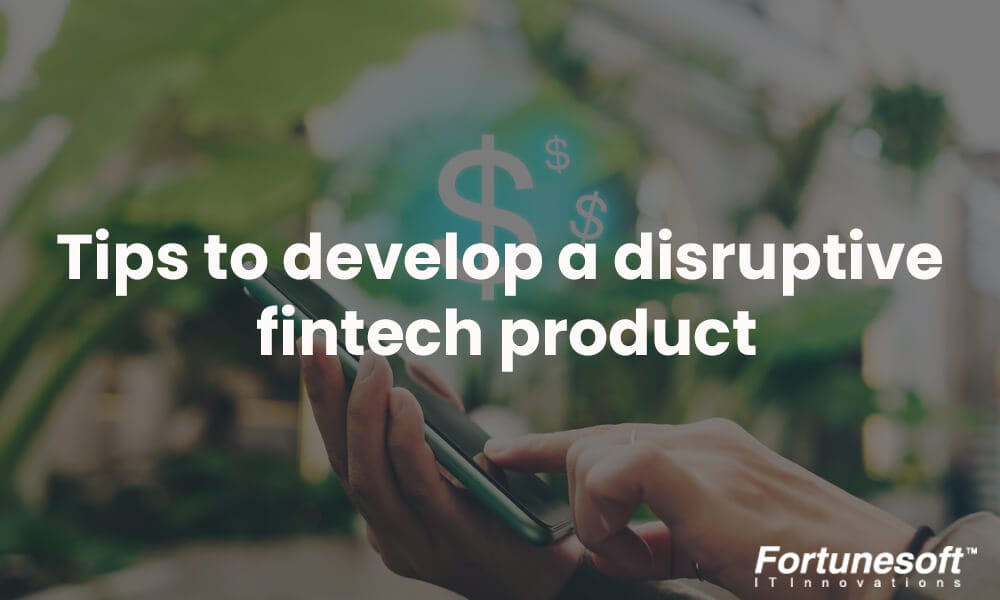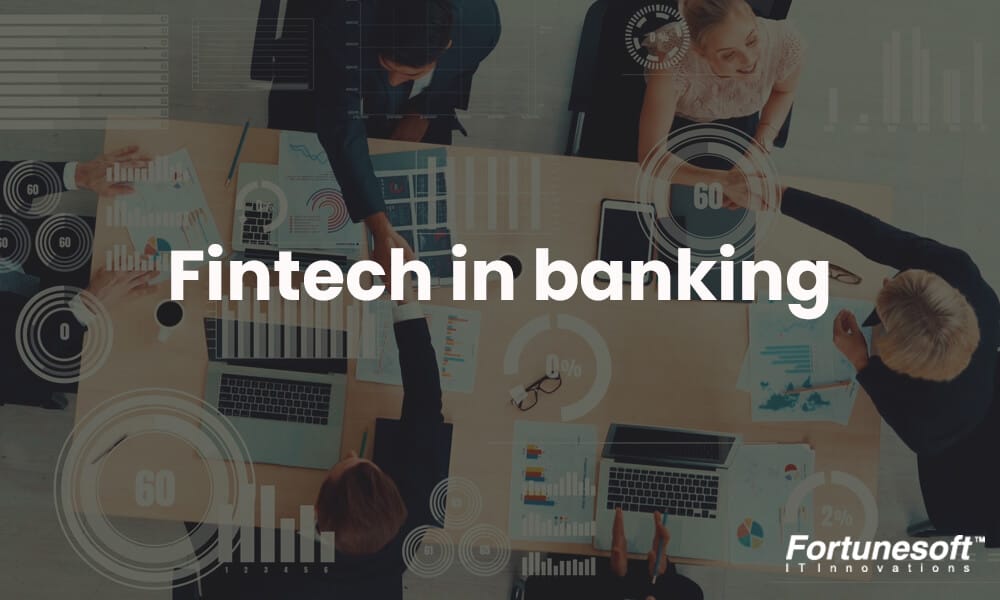 By Deepu George March 30, 2021
12 min read
By Deepu George March 30, 2021
12 min readEmbedded finance – Top 11 use cases you need to know
The acceleration of the fintech wave is heavily driven by a significant development called embedded finance. This development in fintech is predicted to get $7 trillion revenue within 10 years.
Embedded finance is emerging as the next wave for fintech and promises to transform the financial ecosystem. Right from streamlining the process to offering enhanced customer experience and engagement, embedded finance bridges the gap between the businesses and the consumers through various financial services that a consumer looks for.
Businesses embrace the power of embedded finance to deliver tailored financial solutions and services for better customer engagement and retention. Embedded finance helps to integrate the financial tools into the exact set of services to offer consumers a more seamless solution in a frictionless manner.
It is forecasted that embedded finance companies will witness a 5X growth by 2025 with a market size valued over $250 billion. Therefore, every fintech development company must know how this technological advancement in finance will affect the industry and how to leverage its potential completely for business growth.
Let’s check out some use cases where you can utilize the power of embedded finance in your business.
B2B
Embedded finance plays a vital role in corporate success. Numerous non-financial companies want to offer financial services to their consumers to retain their customers and offer an exceptional user experience. Today, non-financial companies are emerging as opportunities by leveraging embedded finance and posing a threat to the banks.
Organizations that are into online marketplaces or other service providers such as ride-hailing companies, supply chains, and other SMEs allow clients to access financial products without migrating to other service portals.
Today, UPI has changed the payment landscape and made it seamless for the tech companies to become popular payment providers. Technology platforms like Amazon, Whatsapp, Google offer payment services to users.
SMEs lending arena is continuing to evolve. Thanks to the embedded financing opportunities, financial service providers are undergoing greater pressure to strengthen the value proposition for small businesses. Undoubtedly, Embedded finance is the next big thing in Fintech.
Buy Now, Pay Later (BNPL)
Are you tired of the long checkout process? Or is low wallet balance spoiling your shopping mood?
The Buy Now, Pay Later (BNPL) option comes as a boon to the consumers where they can buy the product immediately and choose to pay later with interest-free EMI payments. This, in turn, boosts the sales and increases the profit margin of the retailers.
BNPL offers a seamless buying experience to consumers without disclosing the bank account details or walking through multiple authentication steps and allows them to pay the collated amount later.
BNPL is a concept in embedded finance that redirects the consumer to a third-party fintech provider. BNPL has emerged as a better alternative to credit cards due to convenience, transparency, and affordability. Every user searches for a frictionless one-tap checkout process. They look for buyer protection and minimum friction points with digital payments. Therefore, credit cards are lagging behind with the expectations of the modern consumers. The popularity of BNPL amongst Gen Z and millennial shoppers has accelerated the rise in adoption of BNPL for better user engagement and experience.
Most of the BNPLs are free for consumers who pay the amount on time. BNPL doesn’t burden consumers with high interest rates. It charges a late fee to consumers who fail to repay the amount. Leveraging the BNPL concept has offered retailers with increased sales, higher cart conversions, enhanced purchase frequency, and increase in the cart size.
BNPL providers have a fair share of the revenue with the merchant. Since BNPL are fintech development companies, they can add a lot of value to the merchants and their businesses beyond facilitating payments.
Purchases via QR code
Purchase while scanning the QR code is another wave to expedite the digital payment process. The QR code is a barcode that contains a piece of information. This data is normally the recipient’s bank details from where you scan the code from. As a merchant, you can set up with minimal overhead costs. Customers use their smartphones to scan the QR code and pay.
Credit score on banking websites
One of the most apprehensive factors for the consumers is their credit scores. They are often anxious about what their credit scores will be and alarmed about the factors that affect their credit history.
With the help of embedded finance, you can offer the customers a free credit score calculator on banking websites. This helps the user to monitor the creditworthiness for making the right decision while purchasing.
Healthcare
There is a wide opportunity for embedded finance in the healthcare sector, especially for the U.S. healthcare market as healthcare coverage and costs are a never-ending concern for the consumers.
Embedded finance not only offers an opportunity for services in health insurance but also, offers services in preventive medicine. With the help of transparent pricing and multiple payment choices, people can receive the help they need in urgent situations and don’t have to hinder around in search of finance. Moreover, consumers can be saved with early diagnosing and timely treatment with a considerable amount of money.
Leveraging embedded finance to offer various financial services in the healthcare industry will lead to well-suited coverage plans as per the data sets of the patients. This will also significantly reduce the cost for providers, insurers, and consumers, making the industry more economically efficient.
Automotive
Financing and leasing are the key drivers in the automotive industry. Therefore, some manufacturers own banks and APIs to lead the markets for providing the facilities under the same roof. In the car dealership domain, finance and insurance are the profit drivers. Such businesses offer a wide array of funding and insurance options to the purchasers. With embedded finance, avoiding arrears and costly repossessions is possible thus, offering a better consumer relationship with the business, guaranteed engagement, and brand recognition.
Education
There are multiple options for education loans for students. But sometimes, they take loans more than the capacity to repay. By the end of the degree program, they get in-debted with a huge amount of loans.
Embedded finance platform is a boon to the edutech sector by tapping into the student’s potential through in-depth analysis of various data such as results to identify the capacity of a student to income and repay the loan comfortably. This way, the students will not end up borrowing money more than their affordability and capacity.
Agriculture
Embedded finance plays an important role in the agriculture domain. Agriculture loans are normally offered to farmers to fund seasonal agriculture operations, various activities such as animal farming, pisciculture, purchase of land, purchasing agricultural tools, to buy inputs such as fertilizers, seeds, insecticides, and many more.
Embedded finance programs will help the farmers and agricultural companies to manage and minimize the risk and offer custom finance options to grow with a better understanding of the agricultural process.
Insured Rides
Every passing day is making commuters more cautious about their safety during the rides. Insurance is a key aspect in this case. Riders can’t afford to comply with the terms and conditions and get into the typical convoluted process of getting insured from a third-party insurance provider.
Companies such as Uber offer insurance policies on their platform. Many ride-hailing companies are trying to leverage the benefit of embedded finance to offer insurance policies on their platform. Uber has embraced the power of embedded finance by offering a nominal insurance premium based on the driver’s rating, the total number of commuters, the safety measures that were followed by the driver during the rides, etc. Uber’s way of leveraging the benefits of embedded finance will help in offering long-lasting consumer relationships with ride-hailing companies.
Credit on online shopping websites
Many times you are so engrossed while shopping on eCommerce websites like Amazon that you forget about the available bank balance or the available limit in their credit card. There are multiple reasons for this such as unexpected cheques, monthly EMI debited from the accounts or any kind of pending payments such as bills or loan repayment.
eCommerce websites, with the help of embedded finance platforms such as Stripe, can provide instant credit on their platforms. This increases customer engagement on the eCommerce platform even more. Whether to provide instant credit or not, this can be easily analyzed with the help of analytics on customer’s credit and purchase history.
Real estate
Real estate purchase involves a lot of unending documentation. This hassle of managing documents makes one rethink whether buying a house or property is a feasible option. Embedded finance gives an opportunity to integrate this tedious documentation process into the lending process, eliminating the need for a real estate agent.
Embedded fintech has a lot of opportunities in Real Estate. Embedded finance offers a new way to get a seamless and affordable experience for homeowners through the concept of insurance for property owners. Embedded lending is another disruptive approach that is looking to transform the mortgage market.
Wrapping it up!
The use cases listed above describe various use cases of embedded financial services. This powerful digital revolution in the finance ecosystem is tremendously changing the world that reshapes the way the companies are earning revenue and how the brands are interacting with their consumers.
Embedded finance has not only paved the way to offer a better consumer experience and engagement but also, offers new opportunities to improve the financial service landscape.
Top fintech development companies are collaborating with banks to create bigger markets and help businesses from various domains to survive and excel in this high-paced competition.
Author Bio


 Facebook
Facebook Whatsapp
Whatsapp LinkedIn
LinkedIn Pinterest
Pinterest














 Start Chat
Start Chat